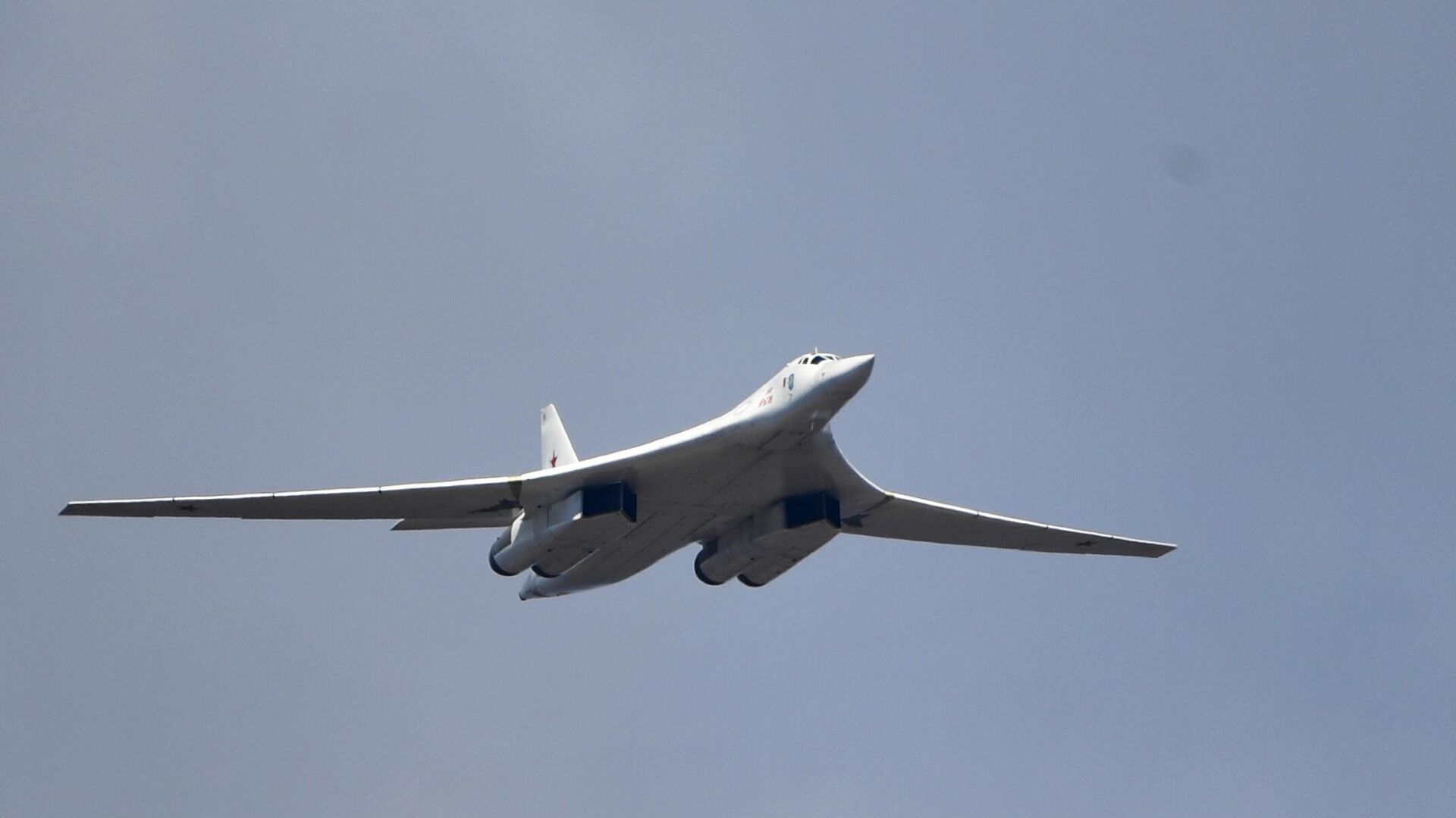https://sputnikglobe.com/20230426/watch-russias-tu-160s-flying-over-neutral-waters-of-barents-norwegian-seas-1109843717.html
Watch Russia's Tu-160s Flying Over Neutral Waters of Barents, Norwegian Seas
Watch Russia's Tu-160s Flying Over Neutral Waters of Barents, Norwegian Seas
Sputnik International
The Russian Defense Ministry has released a video of Tu-160 strategic missile carriers of the Russian Air Force flying over the neutral waters of the Barents and Norwegian Seas. According to the ministry, the pilots spent more than 14 hours in the air.
2023-04-26T08:04+0000
2023-04-26T08:04+0000
2023-04-26T12:28+0000
military
tu-160
russian defense ministry
russia
baltic sea
video
https://cdn1.img.sputnikglobe.com/img/07e7/01/11/1106431087_0:57:2141:1261_1920x0_80_0_0_b7ad28c76545342a6539f58584e7d719.jpg
Russia's Defense Ministry has released footage of the Russian Air Force's Tu-160 strategic missile carriers flying over the neutral waters of the Barents and Norwegian Seas. According to the ministry, the pilots spent more than 14 hours in the air.During the flight, the crews of the long-range aircraft carried out night and day aerial refueling. "Fighter escort was provided by crews of MiG-31 aircraft of the Northern Fleet Air Force and Air Defense Association," the ministry added. The Tupolev Tu-160, nicknamed the 'White Swan', is a supersonic, variable-sweep wing strategic bomber designed and produced by Russia. It is the largest and heaviest combat aircraft in the world and is capable of delivering both conventional and nuclear payloads. The Tu-160 has a maximum speed of Mach 2.05 and can fly up to 12,300km without mid-air refueling. It is equipped with advanced avionics and weapons systems, making it a formidable asset in modern warfare. The Tu-160 has been in service with the Russian Air Force since 1987 and is expected to remain in operation for several more decades.
russia
baltic sea
Sputnik International
feedback@sputniknews.com
+74956456601
MIA „Rossiya Segodnya“
2023
Sputnik International
feedback@sputniknews.com
+74956456601
MIA „Rossiya Segodnya“
News
en_EN
Sputnik International
feedback@sputniknews.com
+74956456601
MIA „Rossiya Segodnya“
Two Russian Tu-160 bombers performed 14 hours flight over Barents and Norwegian Seas
Sputnik International
Two Russian Tu-160 bombers performed 14 hours flight over Barents and Norwegian Seas
2023-04-26T08:04+0000
true
PT1M21S
Sputnik International
feedback@sputniknews.com
+74956456601
MIA „Rossiya Segodnya“
tu-160 strategic missile carriers, russian air force, barents and norwegian seas
tu-160 strategic missile carriers, russian air force, barents and norwegian seas
Watch Russia's Tu-160s Flying Over Neutral Waters of Barents, Norwegian Seas
08:04 GMT 26.04.2023 (Updated: 12:28 GMT 26.04.2023) Russian long-range aviation pilots regularly perform flights over the neutral waters of the Arctic, North Atlantic, Black and Baltic Seas and the Pacific Ocean.
Russia's Defense Ministry has released footage of the Russian Air Force's Tu-160 strategic missile carriers flying over the neutral waters of the Barents and Norwegian Seas. According to the ministry, the pilots spent more than 14 hours in the air.
During the flight, the crews of the long-range aircraft carried out night and day aerial refueling.
"Fighter escort was provided by crews of MiG-31 aircraft of the Northern Fleet Air Force and Air Defense Association," the ministry added.
The Tupolev Tu-160, nicknamed the 'White Swan', is a supersonic, variable-sweep wing strategic bomber designed and produced by Russia. It is the largest and heaviest combat aircraft in the world and is capable of delivering both conventional and nuclear payloads. The Tu-160 has a maximum speed of Mach 2.05 and can fly up to 12,300km without mid-air refueling. It is equipped with advanced avionics and weapons systems, making it a formidable asset in modern warfare. The Tu-160 has been in service with the Russian Air Force since 1987 and is expected to remain in operation for several more decades.


